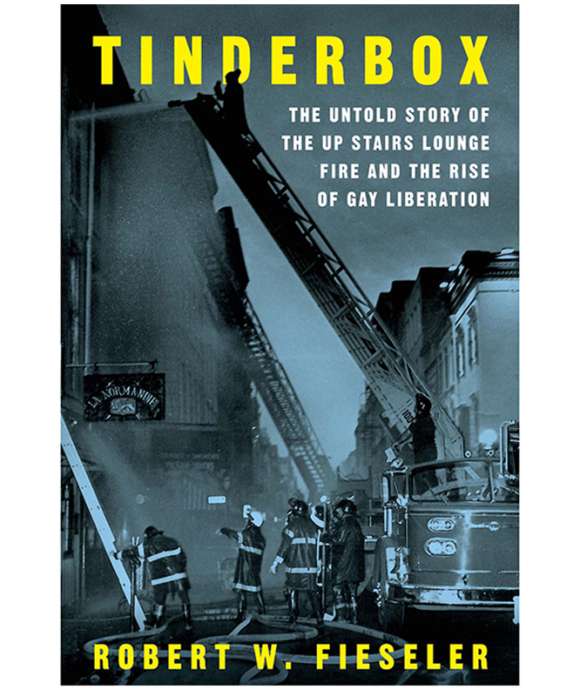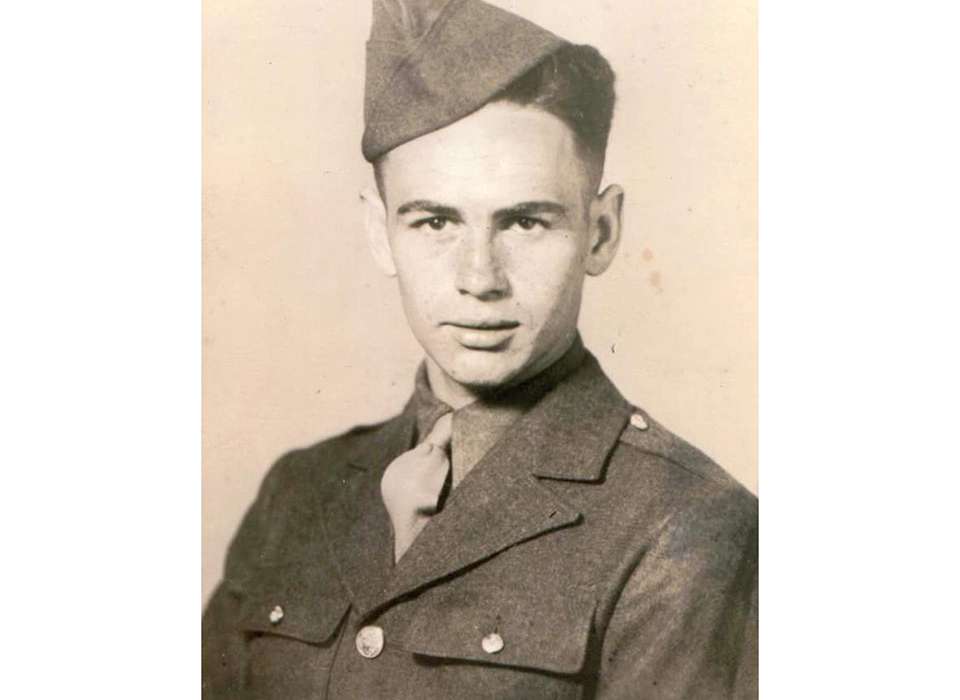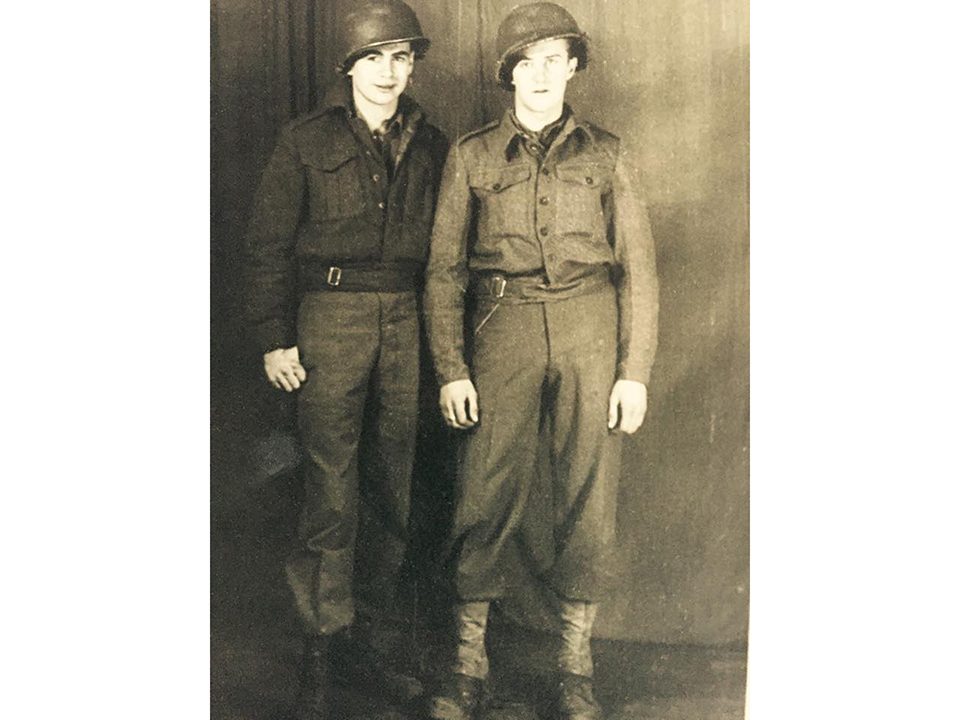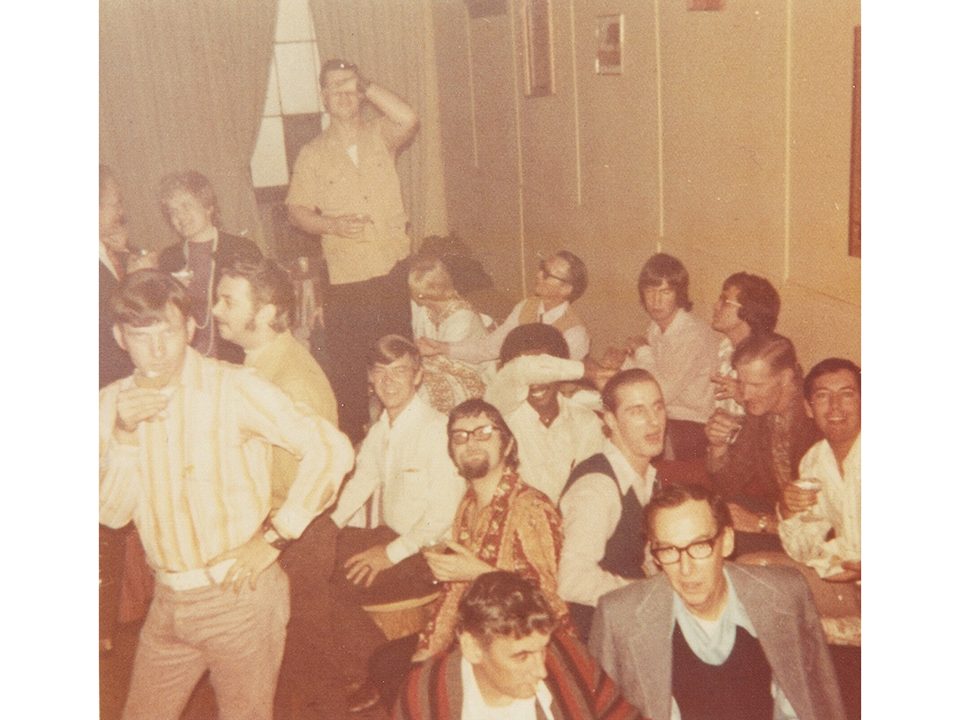Top Image: Private First Class Ferris LeBlanc courtesy of Robert W. Fieseler.
On June 6, 1944, a 20-year-old closeted gay American GI named Ferris LeBlanc sheltered with his Army unit—the 665th Ordnance Ammunitions Company—at a remote base near Manchester. Across the English Channel, approximately 156,000 Allied soldiers stormed the beaches of Normandy in one of the largest amphibious assaults in human history: D-Day. Men like LeBlanc waited their turns. Chills ran down spines as they wondered whether the Germans would beat their friends back into the cold waters.
LeBlanc, a California boy, had seen much since his enlistment in Sacramento. His unit, the 665th, was duly activated in April 1943 at Camp Maxey, Texas, and he participated in that year’s Louisiana Maneuvers, a major military exercise in the backwoods of the Pelican State. He shipped out to Europe aboard US Navy Transport NY 198 on February 27, 1944 and passed the Statue of Liberty on his way to Bristol, where a British Army band and one lone American Red Cross attendant provided a solemn welcome. Chow was powdered food and spam until he tasted the candy in his invasion pack on June 25, 1944, when his troop transport ship slipped the docks of Southampton, destination Utah Beach.
Weeks blurred into months on the European mainland as his unit ran Depot 100 for the First Army and then headed west to Depot 13 in Brittany. There, they supplied “hurry-up” ammunition to General George S. Patton as the Third Army made its mad dash across France and Belgium. Nearly trapped behind advancing Germans in the Battle of the Bulge, the 665th was ultimately saved when Patton’s Third Army reached Bastogne and broke the counteroffensive. One of LeBlanc’s final posts, Depot 0-609, was situated in a former German concentration camp surrounded by barbed-wire fences, providing a stark reminder of the stakes of the conflict. LeBlanc made it through the war uninjured, at least physically, and with his sexuality undiscovered. His core unit, the 665th, suffered but one casualty.
Decades later, after he had embraced his sexuality and resettled in Louisiana, Ferris LeBlanc would burn to death in a notoriously unsolved arson fire at a second-story gay bar on the fringe of New Orleans’ French Quarter.
The conflagration, which began with the aid of lighter fluid, claimed the lives of 31 men and one woman on the night of June 24, 1973. Called the “Up Stairs Lounge fire,” it was the deadliest fire on record in city history and the worst mass killing of homosexuals in twentieth century America. Yet, its victims would be alternately castigated or ignored in death—despite nearly one-third of them being military veterans—due to the illegal status of homosexuality and associated stigma. In the aftermath of the blaze, no culprit was ever be named or charged by police, who proved unable to trust gay witnesses or investigate impartially.
LeBlanc, who had just celebrated his 50th birthday, would be identified among the dead through an anonymous phone caller, who was too closeted or fearful to say anything more. Thus was Ferris LeBlanc, an honorably discharged veteran who had served in the European theater, buried without a flag ceremony or a grave marker alongside three unidentified fire victims that July 31. Despite pleas from a local church willing to take responsibility for his remains, the City of New Orleans interred Ferris LeBlanc in a remote potter’s field for the unclaimed and indigent dead called Resthaven. News of the death never reached his family back in California, in large part because local authorities never thought to examine LeBlanc’s military records.
And there he rested in obscurity, behind a chain-link fence in a field off Old Gentilly Road in New Orleans East. For years, LeBlanc’s younger sister Marilyn wondered what happened to her brother, his absence a painful question mark, until she learned with horror in January 2015 about the circumstances of his passing. LeBlanc’s remains still lie in Resthaven today, despite a campaign from the family to fight Louisiana bureaucracies, exhume his body, and bring him home for a hero’s burial. The major logistical challenge? Neither city nor cemetery can produce the records that would identify his burial plot.
Meet the Author
Robert W. Fieseler is a journalist and the author of the acclaimed debut book Tinderbox, winner of the Edgar Award, the Louisiana Literary Award, and Lambda Literary's Judith A. Markowitz Award for Emerging Writers. Fieseler graduated co-valedictorian from the Columbia University Graduate School of Journalism and is a recipient of the Pulitzer Traveling Fellowship. He lives with his husband in New Orleans. In a virtual presentation with The National WWII Museum on September 9, he considered in detail what happened to that 20-year-old veteran who once crossed the English Channel as a member of the Greatest Generation. He, too, was willing to make the ultimate sacrifice.

Tinderbox Discussion with Author Robert Fieseler
Robert Fieseler, in conversation with Dr. Ed Lengel, discusses this award-winning book which chronicles the events of that night, the controversies in the aftermath of the fire and the activism that followed and proved essential to the emergence of a fledgling gay movement.
Cite this article:
MLA Citation:
APA Citation:
Chicago Style Citation:





![Max Fuchs, New York City cantor, sings as Rabbi Sydney [sic] Lefkowitz, Richmond, VA, conducts the first Jewish services from Germany.](/sites/default/files/styles/max_650x650/public/2025-10/image1.jpg)





